30 July 2025
The modern workstation or home entertainment centre increasingly requires flexible and ergonomic solutions. One of the key elements influencing the comfort of using a monitor is a properly selected handle. It not only saves space on the desk, but also allows the screen position to be adjusted to the individual user's needs. However, choosing the right model is not always as simple as it may seem. In this article, we will outline the key points to look out for when choosing a monitor mount.
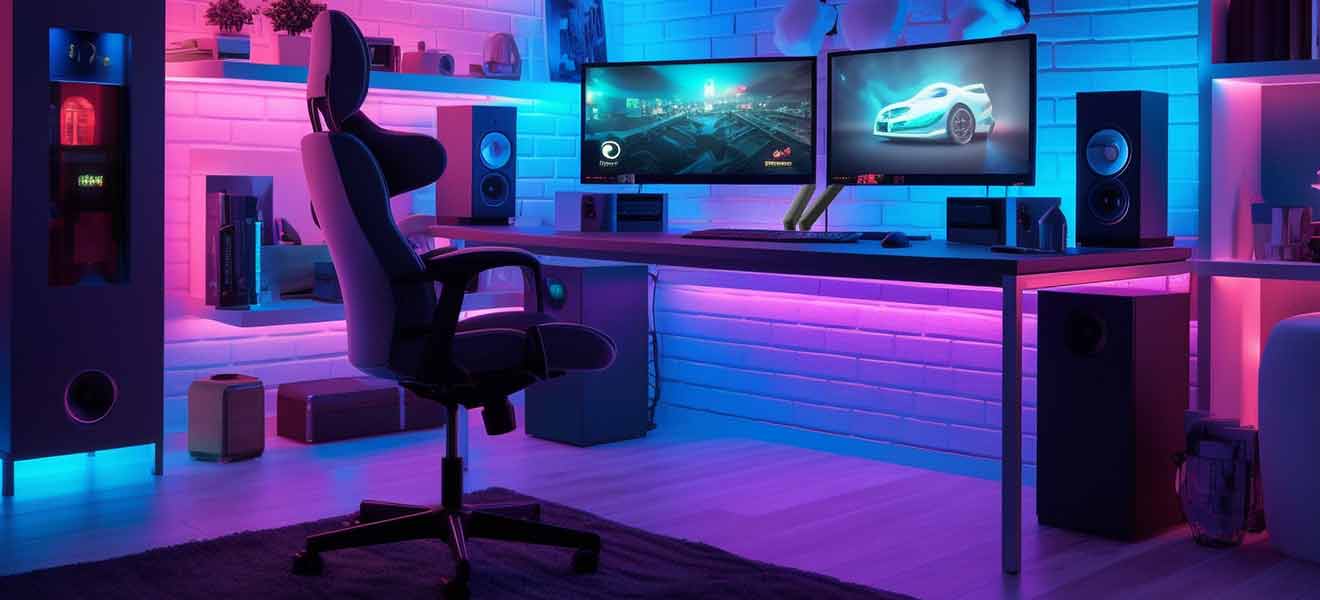
Why use a monitor mount?
The monitor mount is a practical solution that significantly improves the functionality of the workstation. It allows you to freely adjust the height, angle of inclination and rotation of the monitor. It has a direct impact on the user's working comfort and health. The ergonomic position of the monitor can prevent neck pain, back pain and eye strain. What's more, mounting the monitor on a desk mount saves space, which will be particularly appreciated by those working in confined spaces. In the case of multi-monitor configurations, mounts are even essential to create a functional and aesthetically pleasing workstation.
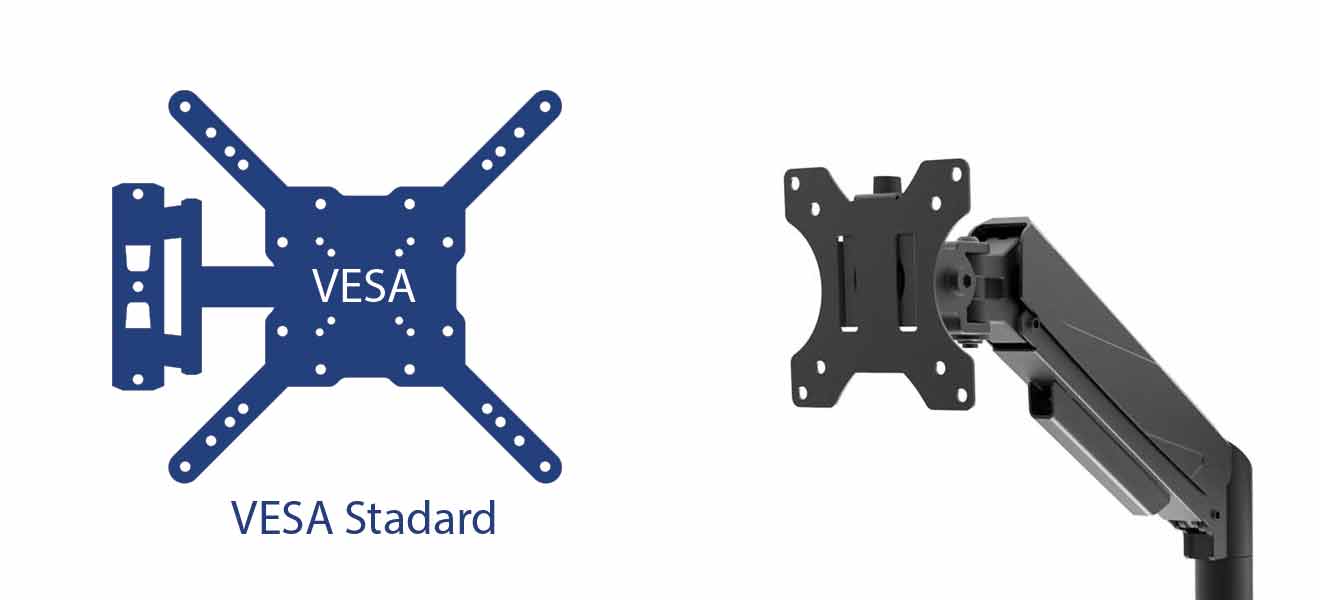
What is the VESA standard?
VESA (Video Electronics Standards Association) is the international standard for the spacing of mounting holes on the back of monitors and televisions. It enables devices to be easily and securely attached to wall, desk or ceiling mounts. The VESA standard defines horizontal and vertical hole spacing, expressed in millimetres.
The most common VESA sizes are:
- 75 × 75 mm – for monitors from 10 to 22 inches
- 100 × 100 mm – for monitors from 10 to 30 inches
- 200 × 100 mm – for screens from 30 to 43 inches
- 200 × 200 mm – for monitors from 24 to 40 inches
- 300 × 300 mm – for screens from 40 to 50 inches
- 400 × 400 mm – for monitors from 32 to 55 inches
- 600 × 400 mm – for screens from 40 to 65 inches
- 800 × 400 mm – for monitors from 55 to 85 inches
- 800 × 600 mm – for screens over 85 inches
Before purchasing a mount, it is worth checking the specifications of the monitor to ensure which VESA standard it supports. This information can usually be found in the user manual or on the manufacturer's website. If there are no visible mounting holes, an adapter may be required.
How do I measure the VESA spacing?
If you do not have the technical documentation of the monitor, you can measure the mounting hole spacing yourself. Simply measure the distance (in millimetres) between the centres of the horizontal and vertical mounting holes on the back of the monitor casing. The result of the measurement will give us the VESA value, e.g. 100 × 100 mm.
Does every monitor fit in the bracket?
Most modern monitors support the VESA standard. Nevertheless, there are still models on the market that do not have mounting holes or that have non-standard manufacturer solutions. In such cases, you should:
- use a special VESA adapter,
- check compatibility with a specific monitor bracket,
- consider purchasing a different bracket or monitor with VESA support.
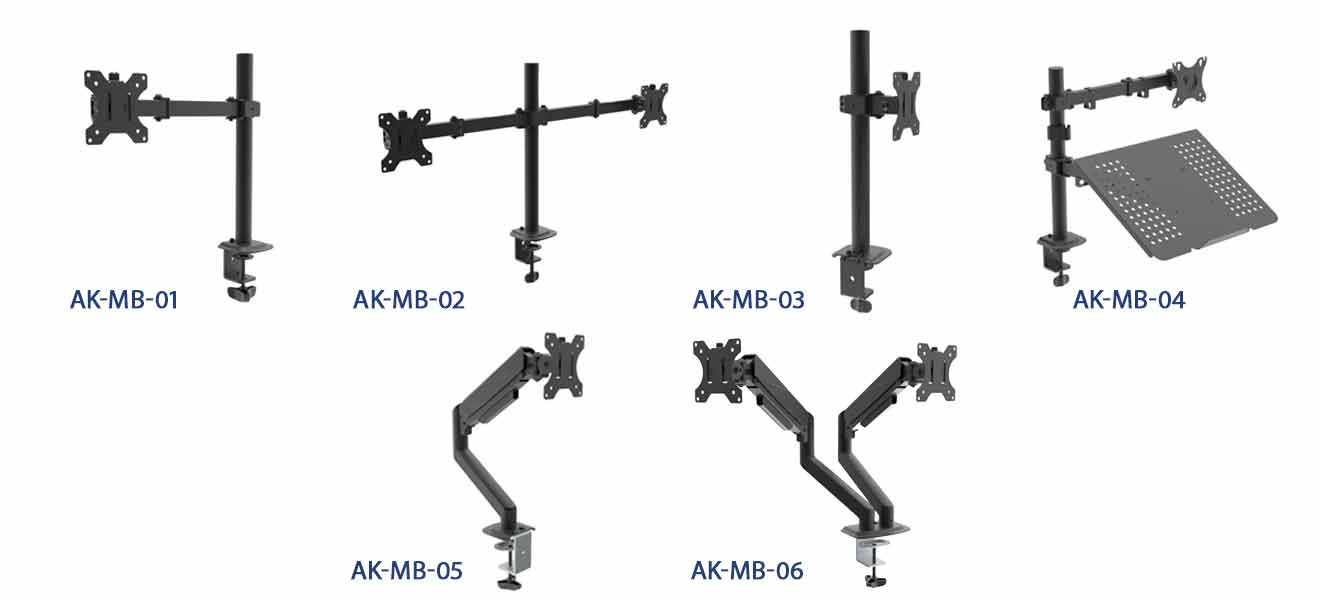
Types of monitor mounts
The market offers a wide range of monitor mounts, varying in mounting method, functionality and adjustability. Choosing the right type depends on individual needs, the type of workstation and the available space.
Depending on needs and space conditions, we can distinguish between several basic types of mounts:
- wall brackets
Mounted directly to the wall, they save desk space. Ideal for fixed workstations or presentations. Some models offer the possibility to adjust the angle of tilt or rotation of the screen.
- desk handles
Attaches to the desk top with a clamp or screw. They offer great flexibility in monitor positioning - adjusting height, tilt angle, rotation and even the ability to move the screen in different planes. Models with gas arms are also available, which allow smooth and light adjustment of the monitor's position.
- ceiling fixtures
Less common in domestic settings, but useful in public spaces, meeting rooms or information points. They allow the monitor to be suspended from the ceiling, which is practical when space is limited.
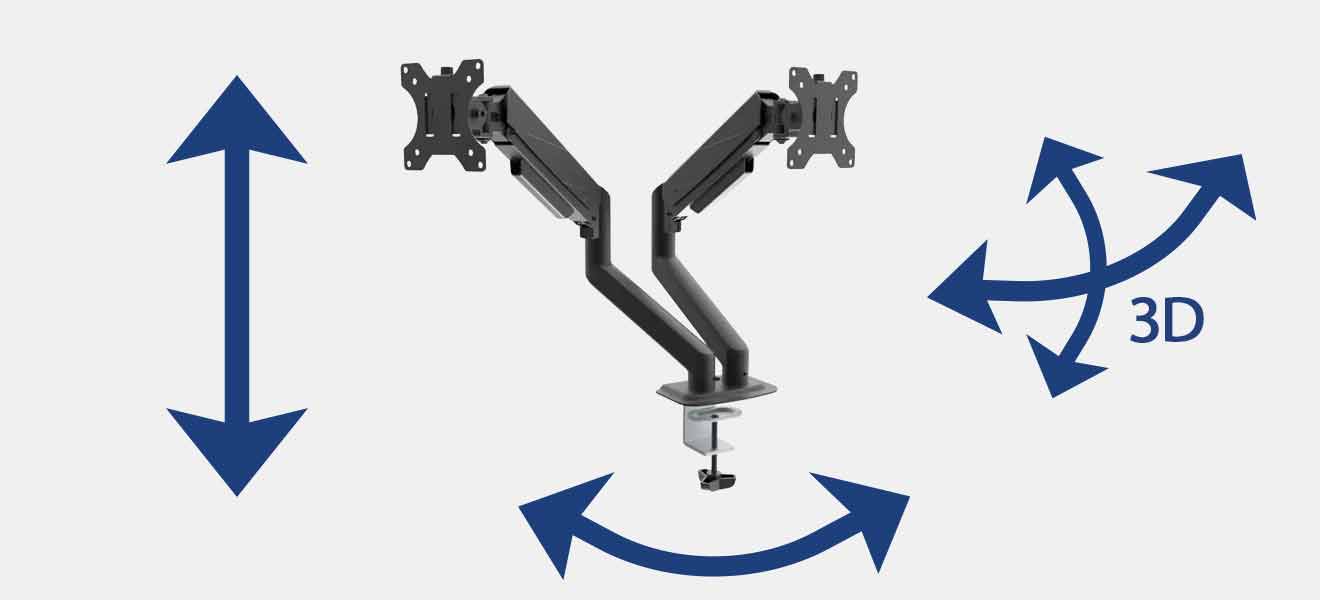
Key parameters when choosing a monitor mount
In order to ensure that the monitor mount fulfils its purpose and provides safety and comfort, it is important to pay attention to several important aspects:
1. VESA compatible
The arm must comply with the VESA standard supported by the monitor. Some mounts offer adjustable hole spacing for added versatility.
2. Maximum load capacity
Load capacity is the maximum weight of the monitor that can be safely held by the arm. This parameter, usually expressed in kilograms, must be greater than the actual weight of the monitor. It is recommended to choose a mount with a load capacity that exceeds the weight of the monitor by at least 20-30%, providing a safe margin.
Monitors with a diagonal of 24-27 inches usually weigh between 3 and 8 kg, while larger screens of 32-43 inches can reach a weight of up to 20 kg. Larger capacity mounts are made from thicker steel profiles and have structural reinforcements.
3. Scope of adjustment
Monitor mounts offer a variety of adjustment options:
- Screen height adjustment - allows you to adjust the position of the monitor to suit your height.
- Screen angle (tilt) - allows you to tilt the screen up or down, typically between -5 and +15 degrees.
- Screen rotation (swivel) - allows the monitor to be rotated horizontally (left and right).
- Pivot - rotates the screen by 90°, useful when working with documents in portrait orientation.
From an ergonomic point of view, height adjustment is particularly important. The top edge of the monitor should be at eye level or slightly below. Mounts usually offer an adjustment range of 100 to 400 mm to accommodate different user heights.
4. Range of handle
For monitor mounts with a movable arm, the reach of the arm and the number of joints are important. The arms can be single-jointed, double-jointed or multi-jointed. A higher number of joints means greater positioning flexibility, but also greater design complexity.
The range of the arm determines how far the monitor can be positioned from the mounting point. Standard mounts offer a range of 20 to 60 cm. This allows the monitor to be moved away from the wall or edge of the desk and closer to the user.
5. Number of monitors and additional devices supported
Mounts designed for one, two or even four monitors are available. When working with multiple screens, it is worth noting that each screen can be adjusted independently. There are also mounts with support for a laptop and an additional screen.
6. Workmanship and quality
Die robuste Aluminium- oder Stahlkonstruktion gewährleistet Langlebigkeit und sichere Verwendung. Monitorhalterungen aus Kunststoff können weniger belastbar sein.
7. Additional functions
Some monitor mounts offer additional functionality, such as:
- a cable management system,
- VESA quick-release fasteners,
- built-in USB or audio ports,
- gas arms to aid adjustment.
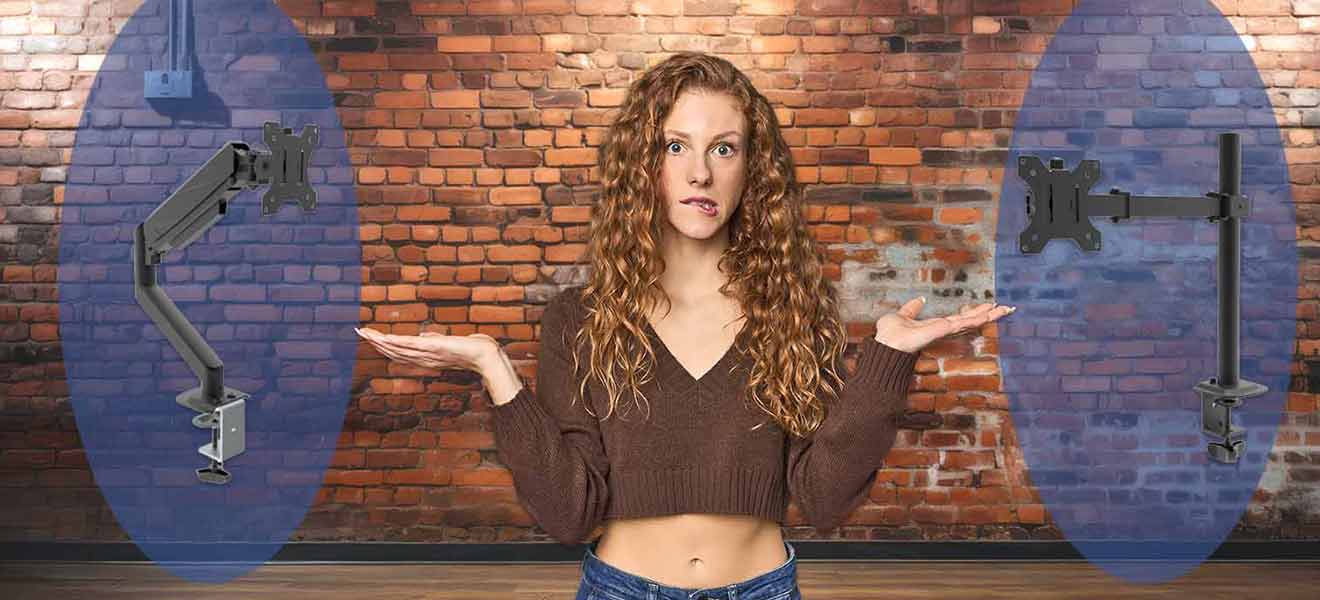
Mounting the holder - step by step
Correct installation of the monitor mount is crucial for safety and comfort. Here are general tips:
- Prepare the mounting location - make sure the wall or desk is strong enough to support the weight of the monitor and mount.
- Mounting the VESA plate - attach the mounting plate to the back wall of the monitor using screws.
- Attaching the bracket - attach the bracket to the wall or desk according to the manufacturer's instructions.
- Hang the monitor - carefully hang the monitor on the bracket, making sure it is securely fastened.
- Quality check - check the stability of the whole structure and test all mechanisms.
- Adjusting the screen position - adjust the monitor position to your needs using the available functions.
For monitors without the VESA standard, there are adapters available to mount such devices on standard mounts.

Ergonomics - how to position the monitor mount correctly?
The correct positioning of the monitor has a key impact on health and comfort at work. An incorrect screen position can lead to neck, shoulder and eye pain, as well as back problems. Height adjustment is particularly important to position the screen at eye level and prevent excessive head tilt.
According to ergonomic recommendations, the top edge of the monitor should be at eye level or a maximum of 5-7 cm below. The distance from the eyes to the screen should be between 50 and 70 cm, depending on the size of the monitor. The monitor should be positioned perpendicular to the direction of vision, with the monitor surface slightly sloping downwards.
In the case of multi-monitor configurations, mounts allow for precise adjustment of the screens relative to each other. Monitors should be positioned in a slight arc, with the main screen positioned directly in front of the user. The height difference between monitors should not exceed 2-3 cm.
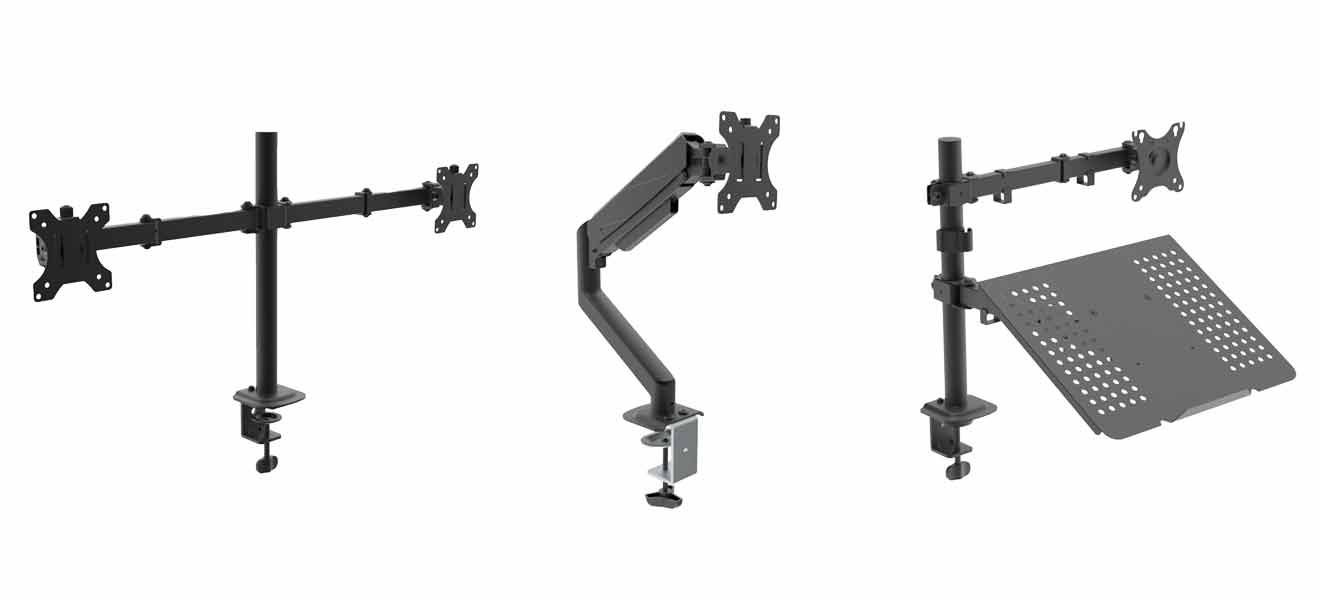
Monitor desk mounts from Akyga®
Choosing the right monitor mount is an investment in user comfort and health. It is crucial to pay attention to VESA compatibility, load capacity, adjustment range and mounting method. Thanks to the wide range of mounts available on the Akyga® website, every user can find a solution perfectly suited to their needs. An optimised workplace is not only about comfort, but also about preventive health, which benefits you in the long run. Find out how easy it is to improve the ergonomics of your workstation with Akyga® brand monitor and laptop holders.
